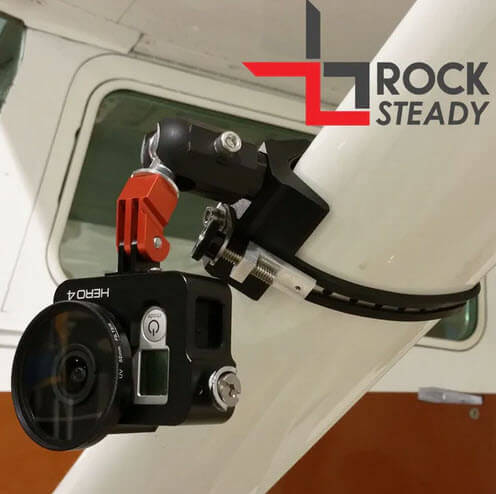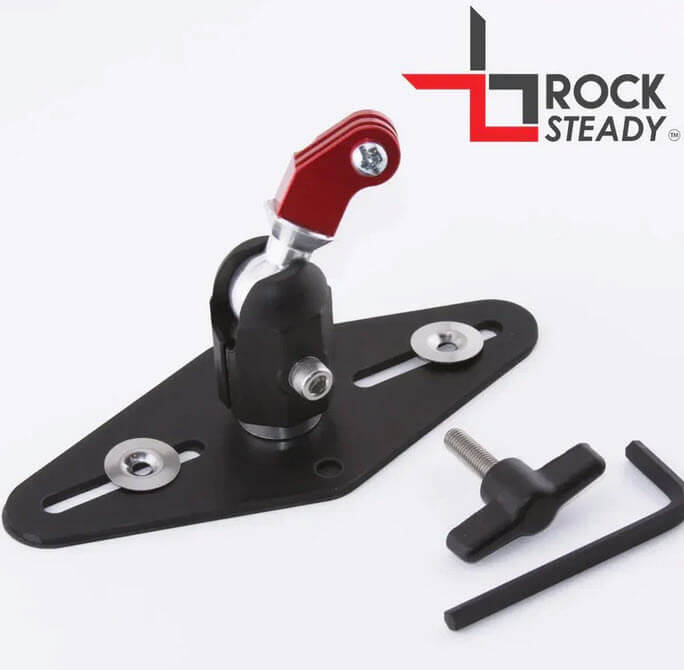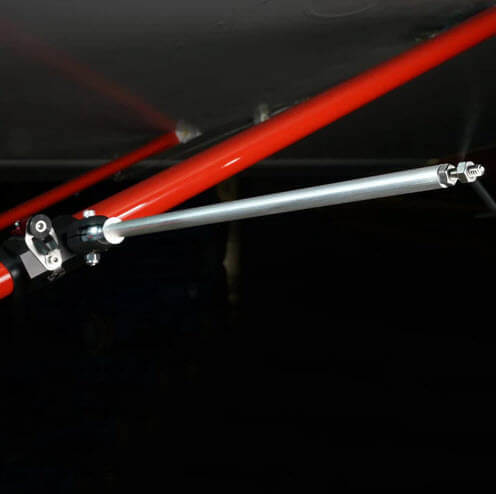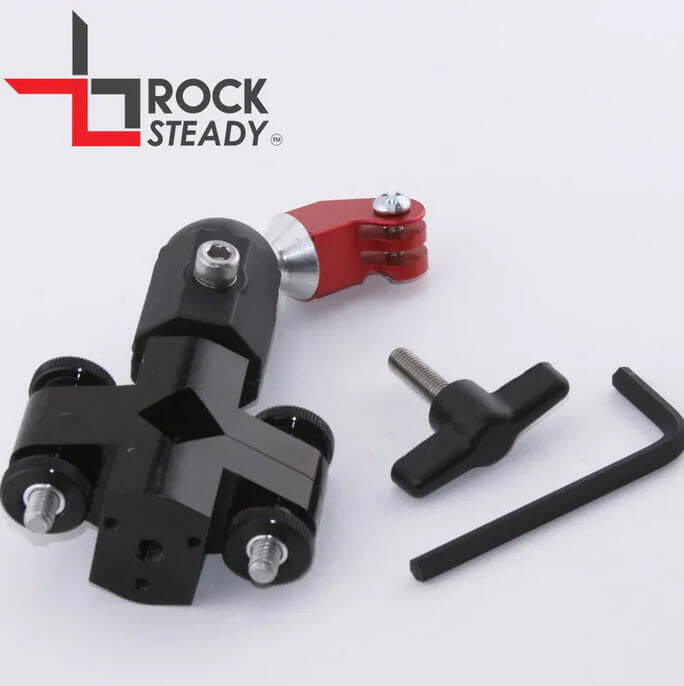Expanding Horizons: The Ultimate Guide to Aircraft Camera Mounts
[/vc_column_text][/vc_column][/vc_row]Taking Flight: A Comprehensive Guide to Aircraft Camera Mounts
For aviation enthusiasts and aerial photographers alike, capturing the majesty of flight through video or still images requires not just skill but the right Aircraft camera mounts equipment. Today, we delve into the high-flying world of aircraft camera mounts, exploring why they’re not just accessories but essential gear for safe and stunning aerial footage.
Why Quality Mounts Matter
The skies are no place for compromise, especially when it comes to securing your camera equipment. Inferior mounts can lead to loss of expensive gear, or worse, become hazards during flight. Here’s where companies like MyGoFlight and FlightFlix come into play, offering solutions that are both robust and reliable. Their product line, Rock Steady, has become synonymous with durability, crafted entirely from metal, ensuring that your camera stays exactly where you want it, even when pulling high Gs or facing turbulent conditions.
Modularity and Versatility
One of the standout features of modern camera mounts is their modularity. The ability to mix and match components allows pilots and photographers to customize their setup for any aircraft, from the fabric-covered Carbon Cub to high-performance extra aircraft. This flexibility ensures that whether you’re looking for an external view of your aerobatics or an internal cabin perspective, there’s a configuration for your needs.
- Durability: Essential for longevity and safety, ensuring the mount withstands the rigors of flight.
- Material Quality: From strut clamps to adjustable arms, quality materials are non-negotiable for reliability.
Customization: Tailoring Your View
Modern camera mounts offer unparalleled customization:
- External Mounts: Ideal for capturing stunning exterior visuals, mounts like the Rock Steady VibeX provide vibration dampening for crystal-clear footage, whether you’re tracing a wingtip or capturing landscapes.
- Internal Mounts: These need to be compact yet sturdy, utilizing systems like Flight Flix Mounts for versatile setups within the cockpit, ensuring pilots maintain clear visibility and control access.
- Adaptable Systems: Quick-release features allow pilots to switch setups effortlessly, adapting from external to internal views without the need for tools, which is crucial during flight operations.
Installation Deep Dive
Mounting a camera on an aircraft involves more than just attachment; it’s about integrating technology into your aerial experience:
- Preparation: Assess the best mounting points considering both aesthetics and
 aircraft integrity.
aircraft integrity. - Safety Checks: A rigorous check to ensure all components are securely fastened is mandatory. This includes testing in various flight conditions.
- Documentation: Maintain detailed records of all modifications for future reference or upgrades.
Navigating the Regulatory Landscape
- Certification and Compliance: Always align with aviation regulations. Even if some mounts might not need formal approval, treat every addition with the seriousness of a significant modification to stay compliant with FAA or local aviation authority rules.
- Insurance: Update your insurance provider about your camera setup, as this could impact your coverage.
- FEE REGS VIDEO HERE
How Does the Aviator GoPro Mount Attach to an Aircraft?
The Aviator GoPro Mount is ingeniously designed to securely attach to existing inspection plates on your aircraft. Here’s how it works:
- Precision Machining: Each mount puck is crafted from a single billet of aircraft-grade aluminum using CNC technology, ensuring a precise fit and robust durability.
- Superior Hardware: The mount comes with stainless steel components that provide strength and resistance to corrosion, ensuring a reliable setup.
- Simple Integration: You attach the mount directly to the inspection plate on your aircraft. This streamlined installation allows for a firm connection without the need for additional modifications to your aircraft structure.
- Flexible Camera Positioning: Once attached, a swivel arm—courtesy of renowned manufacturer Ram Mounts—provides versatile camera positioning. This arm lets you angle your GoPro in almost any direction, capturing the perfect shot every time.
- Vibration Dampening: A neoprene washer is included to minimize vibrations. It serves a dual purpose: protecting your camera from unnecessary shakiness and preventing any scratches or marks on the aircraft’s surface.
This setup ensures a secure, vibration-free connection that is tailored for aviation enthusiasts looking to capture incredible aerial footage.
How to Attach the GoPro Airplane Mount to Your Aircraft
Attaching a GoPro camera mount to your aircraft is a straightforward process that requires no special tools. This mount is crafted from durable aircraft-grade aluminum and reinforced with stainless steel hardware, ensuring both strength and stability during flight.
Steps to Attach:
- Locate the Tie-Down Point: Identify any tie-down point on your aircraft. This is a common location for securing such mounts due to its sturdy connection.
- Position the Mount: Align the mount at the desired angle and position on the tie-down point. Its design allows for flexible adjustment to capture the perfect shot.
- Secure the Mount: Use the built-in design to tighten and secure the mount without needing tools. This bolt-on approach simplifies the process while ensuring a secure fit.
- Minimize Vibration: Neoprene washers integrated throughout the mount play a crucial role. They absorb vibrations, protecting your camera from unwanted shaking during flight.
With this process, you can effortlessly install the mount and capture breathtaking aerial footage, thanks to its thoughtful engineering and user-friendly design.
Practical Tips for Mounting and Usage
- Compatibility: Ensure your mount matches your camera. Use adapters if necessary.
- Mount Placement:
- External: Use aviation-grade clamps for high-speed stability. Always use a safety tether.
- Internal: Position to avoid obstructing pilot’s view or aircraft controls.
- Vibration Reduction: Employ mounts with anti-vibration features for smoother footage.
- Angle and Perspective: Pre-visualize your shots through “chair flying” to perfect your camera angles.
- Audio Recording: Use specialized cables to record cockpit audio, filtering out unwanted noise.
- Testing and Adjustment: Post-flight footage review is crucial for adjustments.
- Security: Always use a secondary tether for external mounts.
- Battery and Storage: Plan for power and storage needs for the duration of your flight.
Looking to the Future
The evolution of aviation and drone technology hints at upcoming innovations in camera mounts. Future advancements might include AI integration for automatic framing or tracking, enhancing the filming capabilities from the sky.
Conclusion
Aircraft camera mounts are pivotal in capturing the essence of flight, requiring careful selection and installation while adhering to regulations. With the right setup, pilots and photographers can share breathtaking aerial perspectives, turning every flight into an opportunity for visual storytelling. Whether you’re capturing serene landscapes or the dynamic maneuvers of an aircraft, the right mount will elevate your aerial photography to new heights.
FAA Regulations Overview for Aircraft Camera Mounts:
- Modification and Alteration: Attaching a camera to an aircraft is considered a modification or alteration. According to FAR Part 43, any alteration can be categorized as major or minor. A major alteration might require a Form 337 and approval from an IA (Inspection Authorization) mechanic, especially if it affects:
- Weight and balance
- Structural strength
- Performance
- Power plant operation
- Flight characteristics
- Other qualities affecting airworthiness
- Temporary vs. Permanent Mounts: If a camera mount is deemed temporary (like suction cups or strap mounts), it might not require a formal approval process, but the pilot in command (PIC) is responsible for ensuring it does not pose a hazard. However, using “temporary” mounts like suction cups can still potentially lead to violations under FAR Part 91.13 for careless or reckless operation if the camera detaches.
- Safety Considerations: Even if not explicitly regulated, the attachment must not interfere with the aircraft’s operation or create a hazard. This includes ensuring the camera does not come loose during flight, which could lead to physical damage or operational distractions.
- Documentation and Compliance: Even for minor alterations or temporary installations, a logbook entry might suffice, detailing the modification and its impact on the aircraft’s weight and balance. However, for anything beyond a simple, non-invasive mount, consulting with an A&P mechanic or even the local FSDO (Flight Standards District Office) for clarity is advisable.
- Operational Regulations: FAR Part 91 outlines general operating and flight rules, where pilots must ensure that any modification, including camera mounts, does not lead to unsafe operation. The emphasis is on preventing any object from becoming a projectile or interfering with aircraft controls or visibility.
- Insurance and Liability: Pilots should inform their insurance providers about camera mounts as this could affect coverage, particularly if an incident occurs due to the camera or its mount.
- Grey Areas: There’s a significant grey area regarding what constitutes a need for formal approval. The community sentiment, as reflected in discussions and posts on platforms like X, suggests that while there’s no blanket approval for external camera mounts, the approach tends to lean on the side of caution, encouraging pilots to ensure any setup is secure, non-invasive, and does not alter the aircraft’s aerodynamic properties significantly.
What Conditions Can Helicopter GoPro Mounts Withstand?
Helicopter GoPro mounts are engineered to handle the demanding environments encountered during flight. They are specifically crafted to endure:
- High G-Forces: These mounts maintain stability and securely hold the camera even under intense acceleration and gravity shifts typical in helicopter maneuvers.
- Extreme Weather: Whether facing fierce winds, heavy rain, or sub-zero temperatures, these mounts are built with materials that resist weather-related wear and tear, ensuring reliable performance in any climate.
In addition to these, their robust construction often includes features that minimize vibration, ensuring smooth video capture, no matter the flight conditions.
Remember, while this provides a general guideline, for specific applications, direct consultation with FAA documentation or a certified aviation mechanic would be necessary, as individual circumstances can lead to different interpretations and requirements under FAA regulations.



